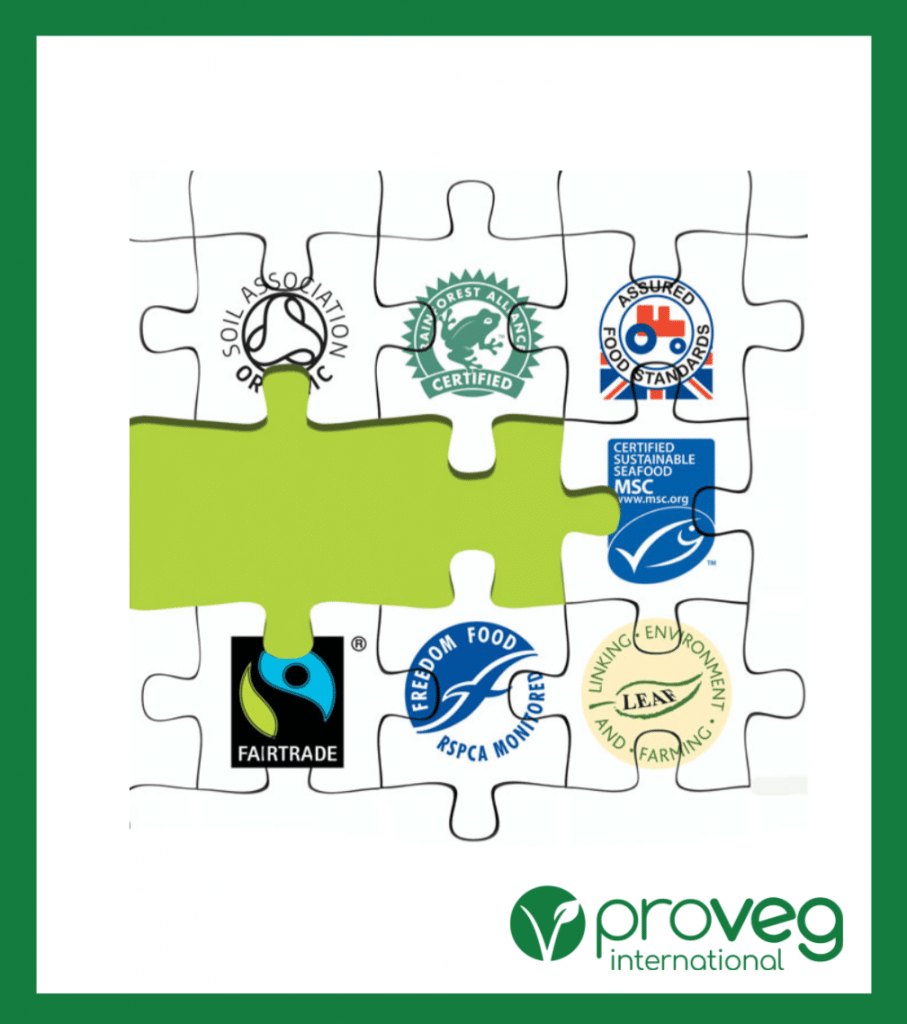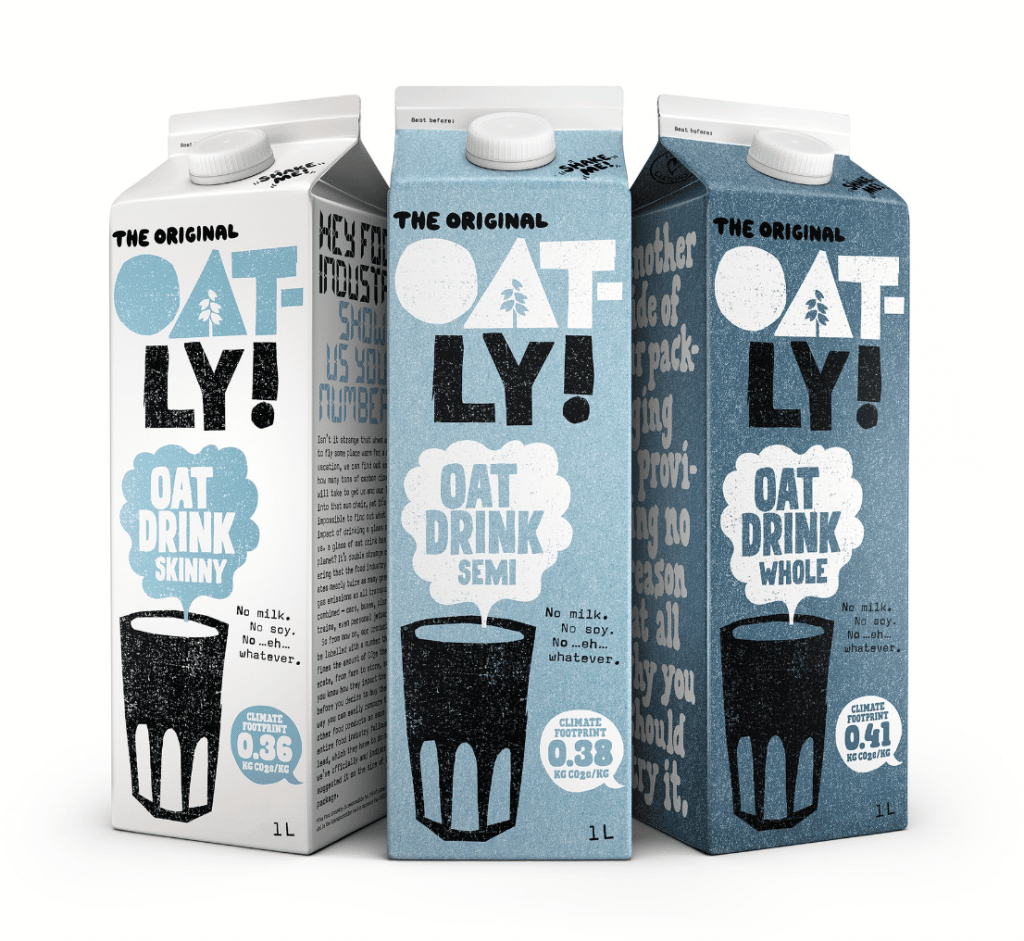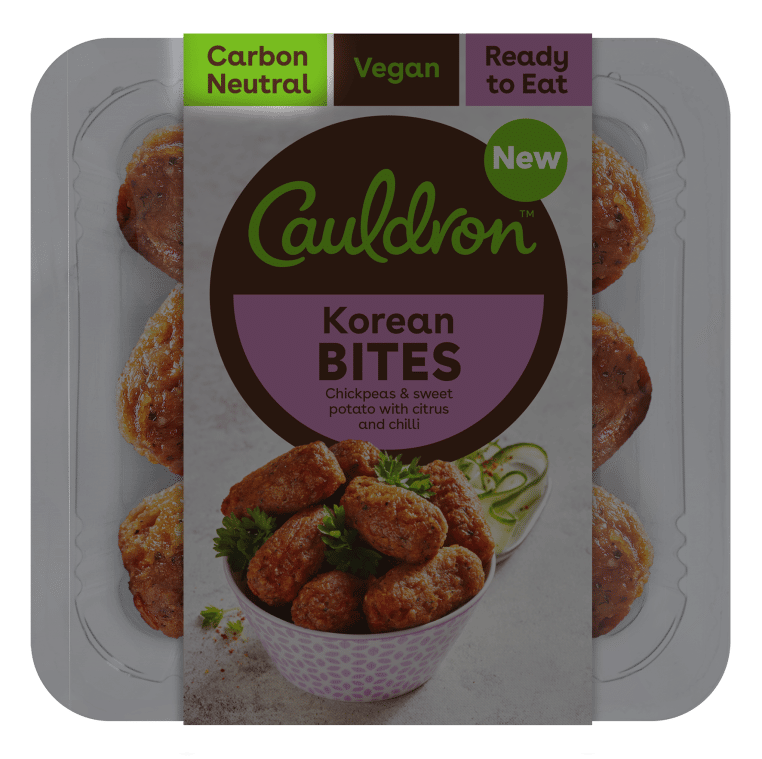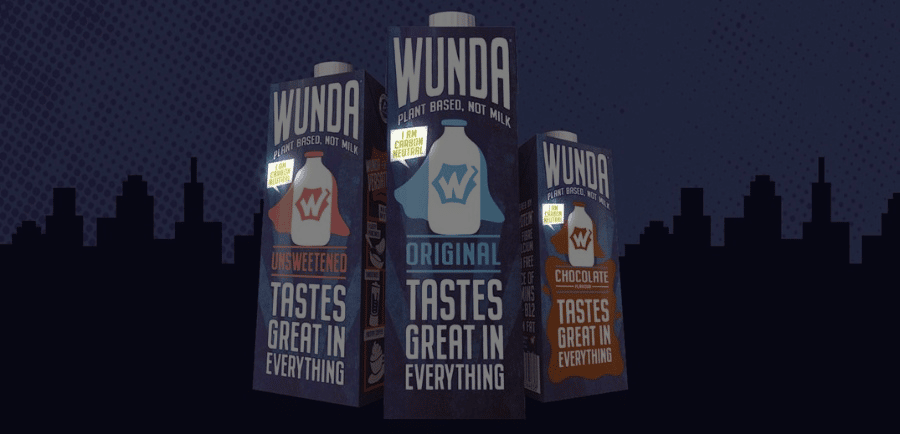Executive Summary
Modern consumers are demanding more sustainable products and this trend is accelerating, with people increasingly viewing a plant-rich diet as a key solution.
- There’s growing demand globally for sustainable food products and many customers are willing to pay a 5-10% premium for sustainability.
- Retailers and brands need to meet their net-zero targets, as well as the demands of climate-conscious shoppers.
- Plant-based alternatives are the ideal way to reduce emissions across the value chain and deliver products that consumers want.
- Half of consumers are still unaware of the environmental impact of their food choices, and many others struggle to identify the ‘most’ sustainable choices.
- Front-of-pack ecolabels can help consumers to make informed choices at a glance, but international standards are unclear and not necessarily consistent with each other.
- Brands and retailers should experiment with different approaches until they have clear data on which method best influences their consumers – thereafter, consistency is key.
- There are three main options for environmental-impact labeling on food products: meta-scores, emissions labeling, and carbon-neutral certification.
- Meta-scores assess a product across multiple impact categories – such as water use, greenhouse gas emissions, eutrophication, and land use. They combine these impacts into a single aggregate score presented to consumers in a clean, minimalist format.
- Emissions labeling focuses on one of two metrics – either CO2 emissions, or CO2-equivalent emissions (which includes all greenhouse gas emissions). These are most useful when presented as percentage savings rather than specific figures, as most consumers don’t have a point of reference for the latter (e.g. it’s more useful for a consumer to learn that a plant-based milk produces 80% less greenhouse gas emissions than dairy milk, compared to just telling them the amount of carbon dioxide it produces).
- Carbon-neutral certification reduces emissions labeling to the simplest level. There are no percentages, figures, or scores – just a single status: carbon neutral. It’s arguably the most easily-understandable metric for most consumers, and resonates with popular media discussions of net-zero targets.
- You can self-certify any of the above methods if you have the resources, but partnering with a specialist accreditor is usually a better option in order to reassure consumers that your score is valid.
- The most important things are that your label has a single score, and is easy to understand – for instance, using color coding rather than black and white.

ProVeg Tips
Plant-based foods are the best way for retailers and consumers to meet their shared sustainability goals. If you’re looking to certify your product as plant-based, talk to our V-Label team. V-Label is an internationally recognized registered seal for labeling vegan and vegetarian products that provide reliable in-store guidance for consumers. The V-Label has partner organizations in more than 30 countries that speak more than 20 languages, making us uniquely positioned to support your products, both locally and internationally. If you’d like to find out more, please get in touch via the V-Label website.
Introduction
Following high-profile endorsements from the UN and IPCC12, environmental impact is now the number-two reason for consumers choosing plant-based products (moving up the ranks from previous years).3
With more consumers seeking planet-friendly diets, there’s an opportunity for brands and retailers to meet this new and growing demand. But offering sustainable products alone isn’t enough – you need to communicate the benefits.
In this article, we’ll outline:
- How plant-based diets deliver sustainability for the whole value chain
- Current methods of environmental-impact labeling
- How some brands and retailers are using different approaches to communicate their products’ sustainability benefits
Understanding the problem: why is sustainability difficult for consumers?
Globally, 85% of people have shifted towards more sustainable purchases over the past five years.4 Many people are including dietary reform as part of this shift. In Europe, 40% of consumers are actively reducing their consumption of animal-based products ( and identifying as flexitarian, pescetarian, vegetarian, or vegan).5 While health remains the top driving force, environmental impact is now a close second – having climbed up the list of consumer motivations in 2021 to be the number-two reason consumers are choosing plant-based foods.6
We’ve done two rounds of consumer research as Foundation Earth. Can I categorically say that consumer demand is changing? Yes. It’s shifting to have a preference to more sustainable products. In the food industry, we’re detecting a value placed on transparency of sustainability.”
When it comes to the environmental impact of their food, concerned consumers go through three stages of awareness:
- No idea how damaging intensive animal agriculture is.
- Some idea, but not aware that plant-based foods are the solution.
- Strong understanding of the above, and a desire for a plant-rich diet.
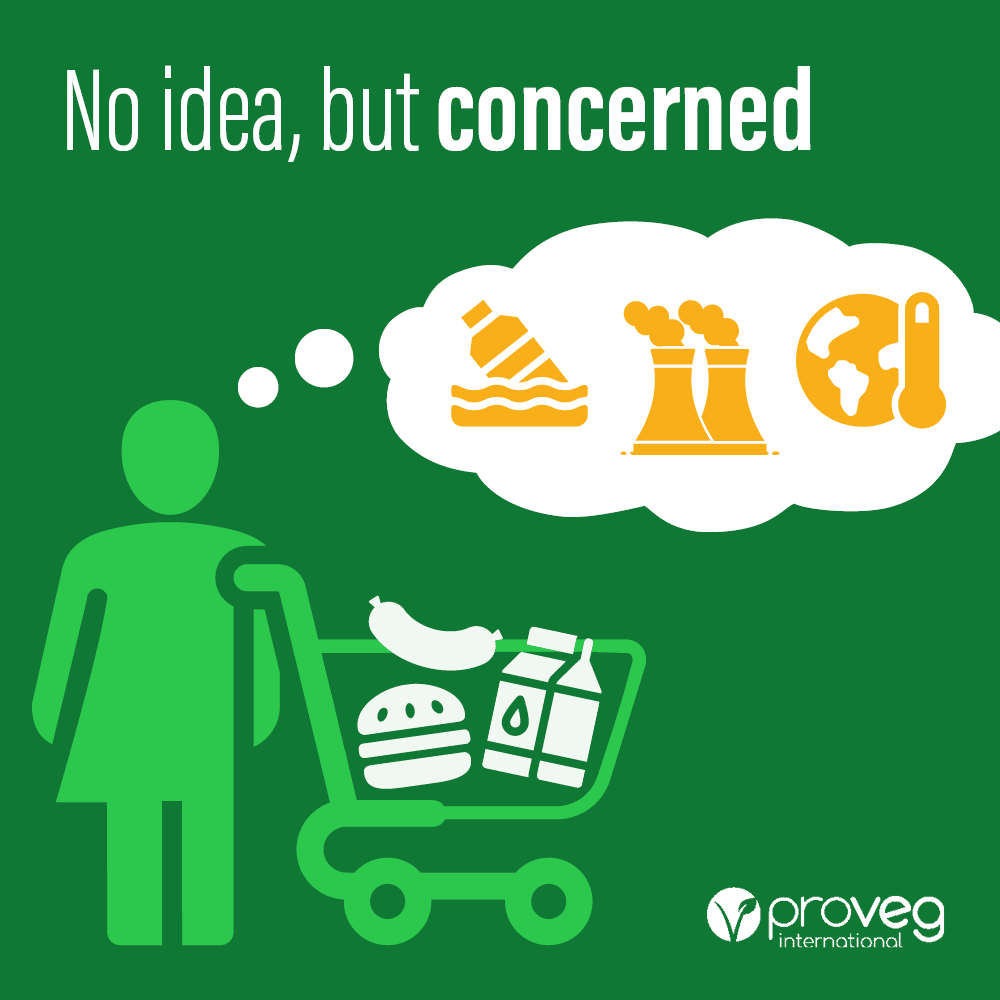
The problem the food industry needs to solve is how best to move consumers out of the ‘no awareness’ stage, and into a place where shoppers feel empowered to make informed decisions about the impact of what they eat.
Most people don’t really understand just how big the impact of animal meat is. But once they understand it, they recognize that they need to change their habits.”
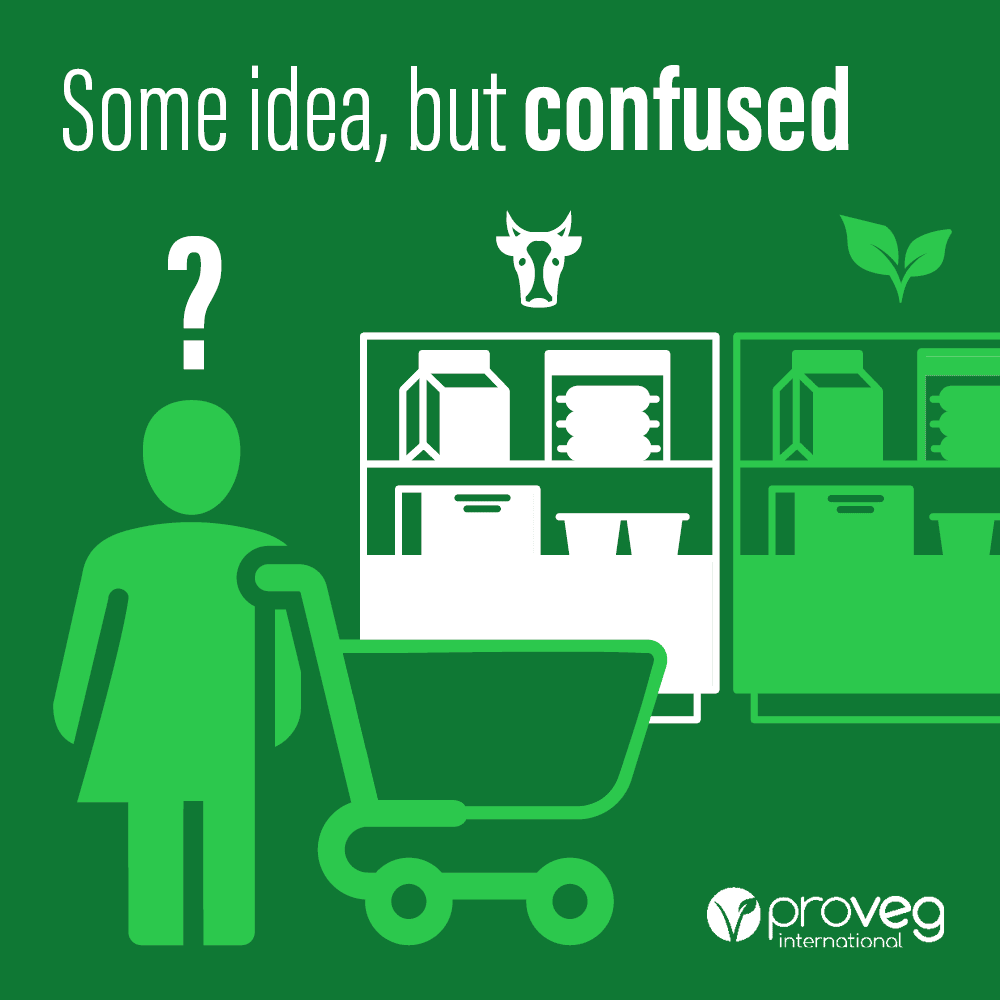
Globally, only 49% of consumers are aware that plant-based alternatives are better for the environment.7
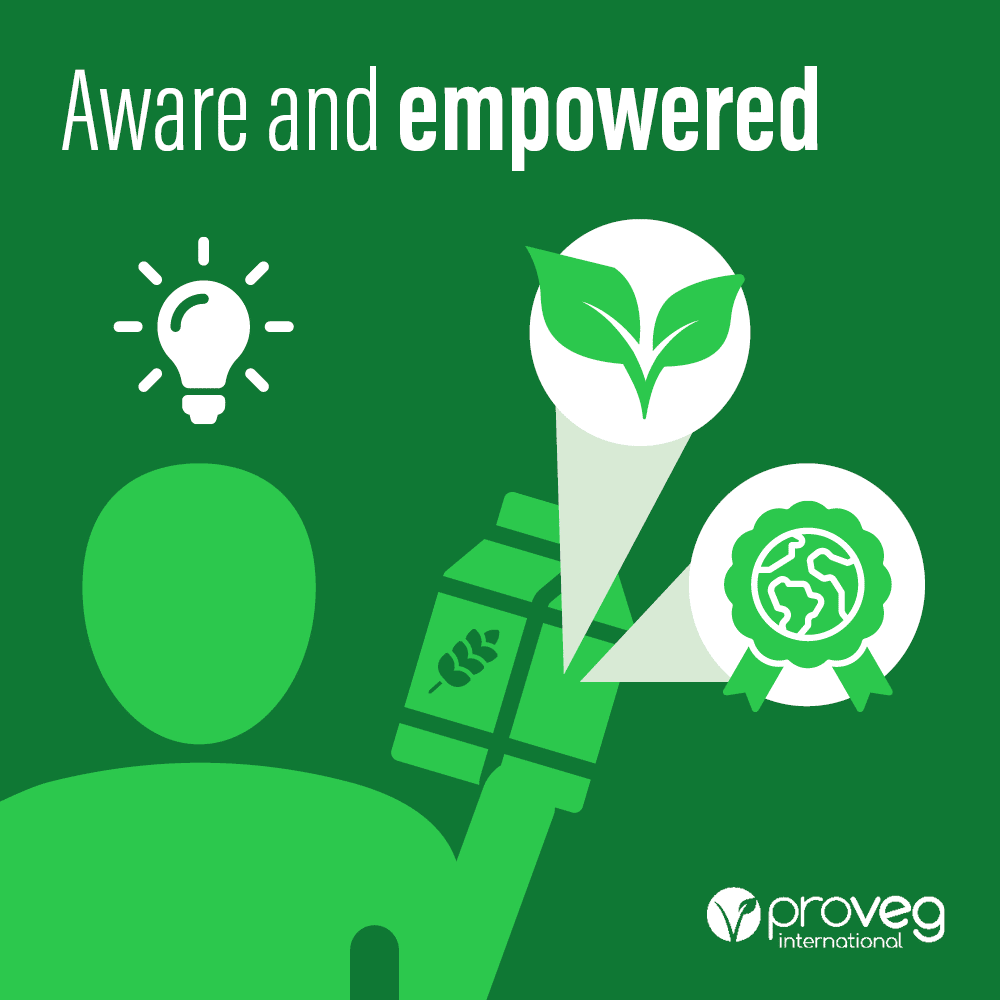
“This is a fantastic opportunity for retailers and brands to meet their net-zero targets,” agrees Stephanie Jaczniakowska-Mcgirr, Head of Food Industry & Retail at ProVeg International. “By raising consumer awareness of the environmental impacts of food, businesses can support consumers in choosing delicious and nutritious plant-rich diets that are better for people, animals, and our planet.”
So far, we’ve established that there’s growing consumer demand for sustainable products, that retailers and brands need to meet their net-zero targets, and that plant-based foods offer a great solution for everyone. (Selling more plant-based products can also help increase your overall revenues – see our whitepaper ‘3 ways to achieve price parity and drive sales’). In the next section, we’ll outline the current methods available to retailers and brands for communicating environmental impact to consumers. But before we start trying to lead consumers through an awareness journey, it’s essential to understand where they’re coming from. It’s time for a quick walk in your consumer’s shoes through those shiny supermarket aisles…
Case Study: navigating sustainability as a consumer
Let’s say you’re a typical consumer who cares about the environment but is super busy and shopping with young children. As you browse the chilled-burgers section, sustainability pops into your head. Assuming all of the tastes appeal to you, you now have thirty seconds to try and weigh up:
- Is locally-produced meat better than imported plant-based alternatives?
- If the animal was grass-fed, does that make it sustainable?
- Can you afford the sustainability premium?
- Does a dairy-cheese vegetarian burger count as sustainable?
- Are plant-based products nutritious enough?
- Should you be avoiding soy products?
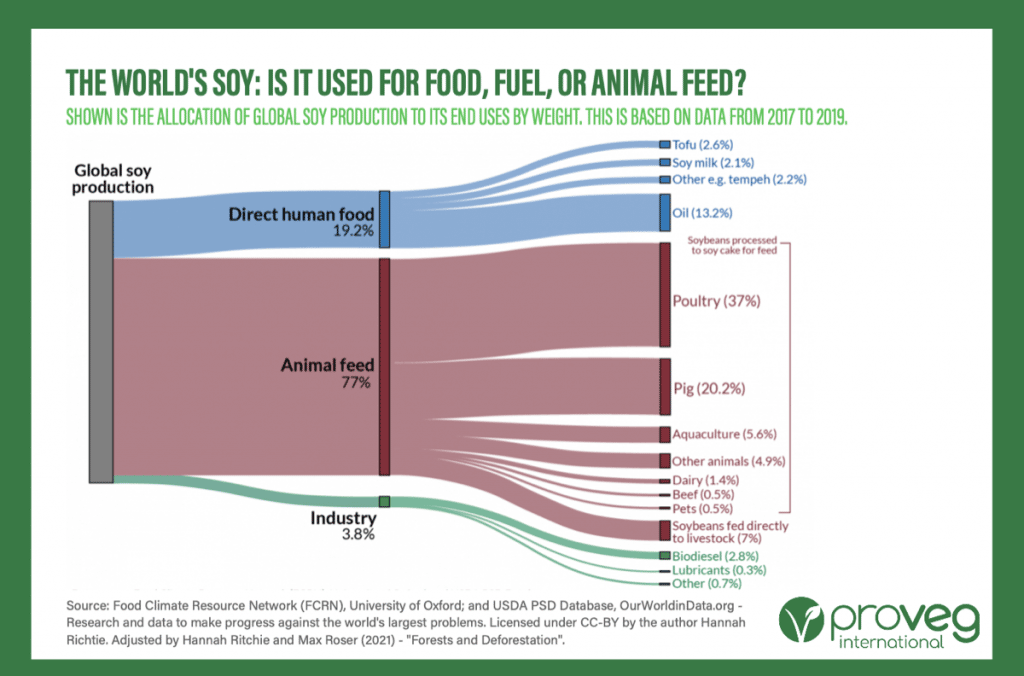
As a retailer with environmentally-concerned customers and net-zero targets of your own, you have a responsibility to provide answers to these questions quickly and concisely. But this is a challenge since it’s a complex subject. Let’s have a look at some of the issues underlying this complexity:
- Transportation only accounts for around 7% of food emissions, meaning that local sourcing is trivial compared to other factors.
- Grass-fed cattle generally have imported soy grain mixed into their feed – in fact, 77% of soy beans produced worldwide are used for animal feed, which means that livestock is driving deforestation in the Global South.9
- Producing 1 kg of edible beef requires up to 25 kg of grain. This inefficiency is a waste of plant-based protein that could instead be consumed directly by humans.10
- Beef and dairy cattle emit roughly the same amount of greenhouse gasses, meaning a veggie burger containing cheese is not an optimal choice for sustainability.11
- The carbon-sequestering that cattle achieve through soil churn is “time-limited, reversible, and at the global level, substantially outweighed by the greenhouse gas emissions they generate,” according to a study by Oxford University.12
- Animal-based meat and dairy generate around 50% more emissions than plant-based alternatives.13
- According to numerous national and international health bodies, including the UK’s National Health Service and the World Health Organization, humans can live perfectly healthily (and, in fact, longer) on balanced, plant-based diets.14
- Harvard University has repeatedly dispelled the myths around soy being unhealthy15, but in order to respect consumers’ diverse needs, you need to offer a range of plant-based protein bases, including wheat and beans.
We’ve established that plant-based alternatives can be just as healthy as animal-based equivalents, and that when it comes to net emissions and environmental impacts, plant-based is the clear winner. So, how can retailers communicate this to consumers quickly and easily?
The mission here is to improve the overall sustainability of our food, communicate this in a transparent, credible way, and enable people to learn from the data.”
Health bodies worldwide are recognizing the viability of plant-based diets
Overall, a diet that is predominantly plant-based and low in salt, saturated fats, and added sugars is recommended as part of a healthy lifestyle. Such diets are widely associated with a lower risk of premature mortality and offer protection against noncommunicable diseases.” 16
With good planning and an understanding of what makes up a healthy, balanced vegan diet, you can get all the nutrients your body needs.”17
Appropriately planned vegetarian diets, including total vegetarian or vegan diets, are healthful, nutritionally adequate […] and appropriate for individuals during all stages of the life cycle, including pregnancy, lactation, infancy, childhood, and adolescence, and for athletes.”18
Environmental-impact labeling: current options
Environmental-impact labeling is a way for brands or retailers to communicate their product’s eco-credentials to consumers – typically via front-of-pack messaging. However, as you’ll see, the methods are not yet standardized across the food sector.
“It’s important we don’t repeat the mistakes of front-of-pack nutrition labeling, where several competing schemes emerged – which didn’t help consumers in their purchasing decisions,” warns Sue Davies, Head of Consumer Rights and Food Policy at consumer watchdog publication Which?.19
This last point is tricky as there’s currently no international standard for environmental labeling. Right now, it’s up to brands and retailers to choose their preferred method.
The key is to experiment with different approaches until you have a clear signal that a label is positively influencing sustainable consumer behavior. From there, you should streamline your methodology and aim for consistency. Using external accreditors and inviting other brands and retailers to join your optimal method will help the whole industry to converge on a set of standards that improve outcomes for the entire value chain.
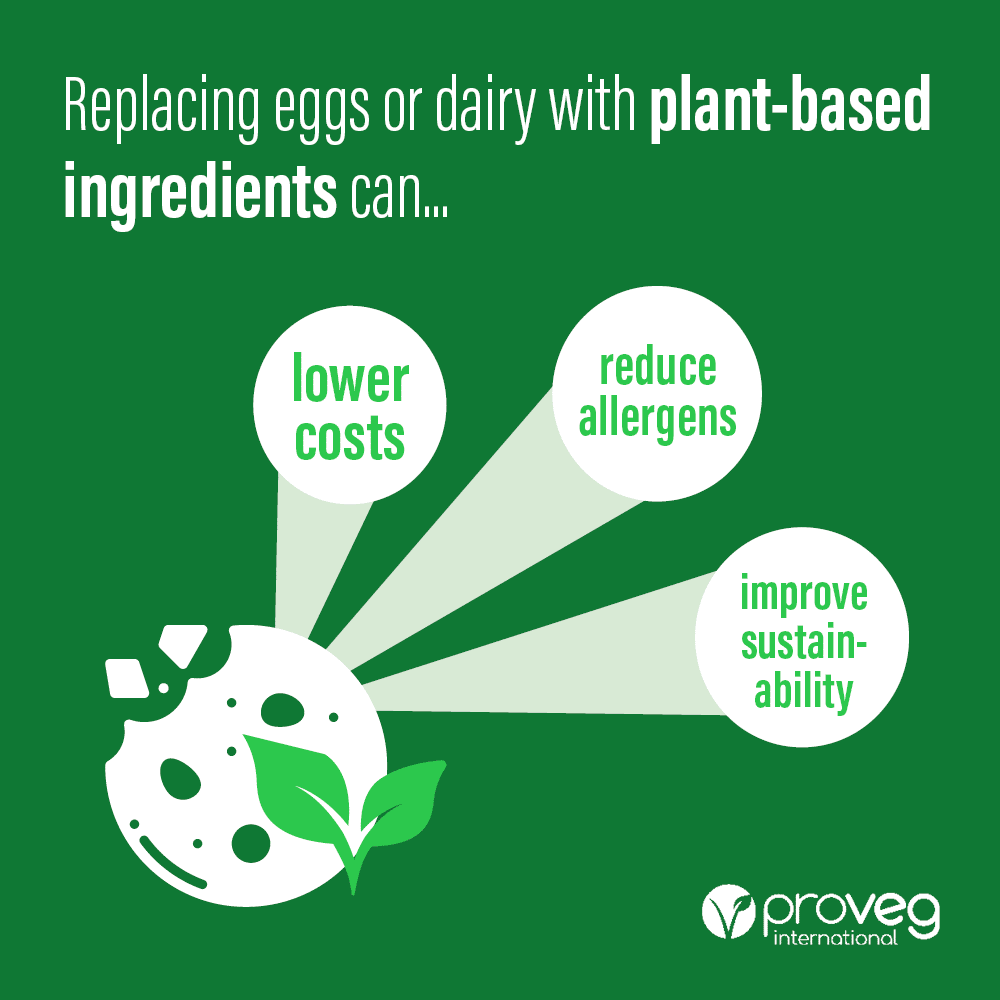
Before we take you through the different methods being used, a quick word on expanding your plant-based product range. We’ve established how damaging animal-based products are for the environment, and you know that your consumers would benefit from plant-based alternatives. Veganizing your classic ranges is a great way to meet your shared sustainability goals. You can make your products more sustainable, reduce manufacturing costs, and often extend shelf life. Check out which companies are leading the way, and how ProVeg’s One Ingredient team helped them do so in our white paper ‘Lessons learned from brands who veganised classic products’.
Metascore labels
Many consumers and brands are calling for a single, reliable indicator of a product’s sustainability. In fact, 55% of consumers globally feel that “there are too many environmental labels, so I don’t know what to look out for”.20 In lieu of a universal standard, a single score would at least make sustainable shopping easier for consumers. It could even help retailers to provide an aggregate score of each person’s shopping visit (more on that later).
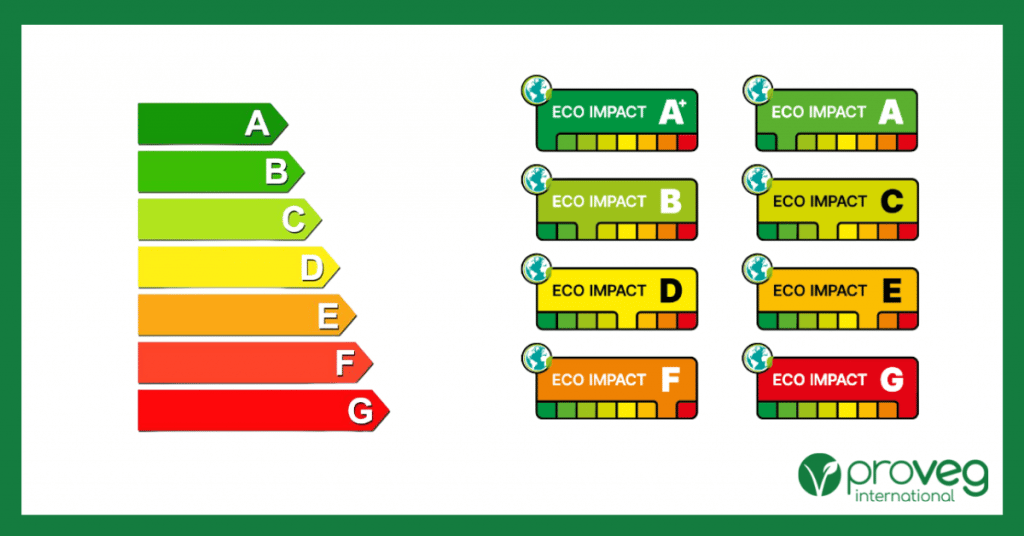
But providing a single score is complicated. “There are definitely some challenges in developing a reliable and simple environmental sustainability label,” says Dr. Filippo Bianchi, Senior Advisor at the think tank Behavioral Insights Health Team. “A clear definition of sustainability is required,” agrees Commerce Analyst Lexington, adding that, to be effective, this definition should be “supported by informative, consumer-focused labelling.”22
According to Dr. Bianchi, if you want an ecolabel to incentivize positive behavioral change in consumers, the following features are essential:
- There should be a single score.
- It should be intuitive and easy to understand.
- It should be applied consistently to all products.
Unfortunately, there is currently no nationally or internationally accepted standard which can be applied universally. However, several organizations are working towards achieving this.
A single aggregate score could reduce label clutter, while better informing consumers, and improving their experience.
Case Study: Mondra’s Eco-Score – simplifying sustainability
Mondra is an eco-certification body that scores food products in terms of their carbon-equivalent emissions and water usage, as well as their impact on water pollution and biodiversity. They measure these factors during the five stages of a product’s lifecycle – covering ingredients, processing, transportation, packaging, and retail – to create an overall impact score.24
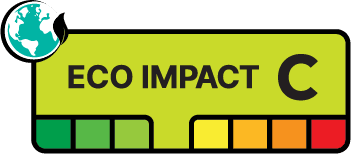
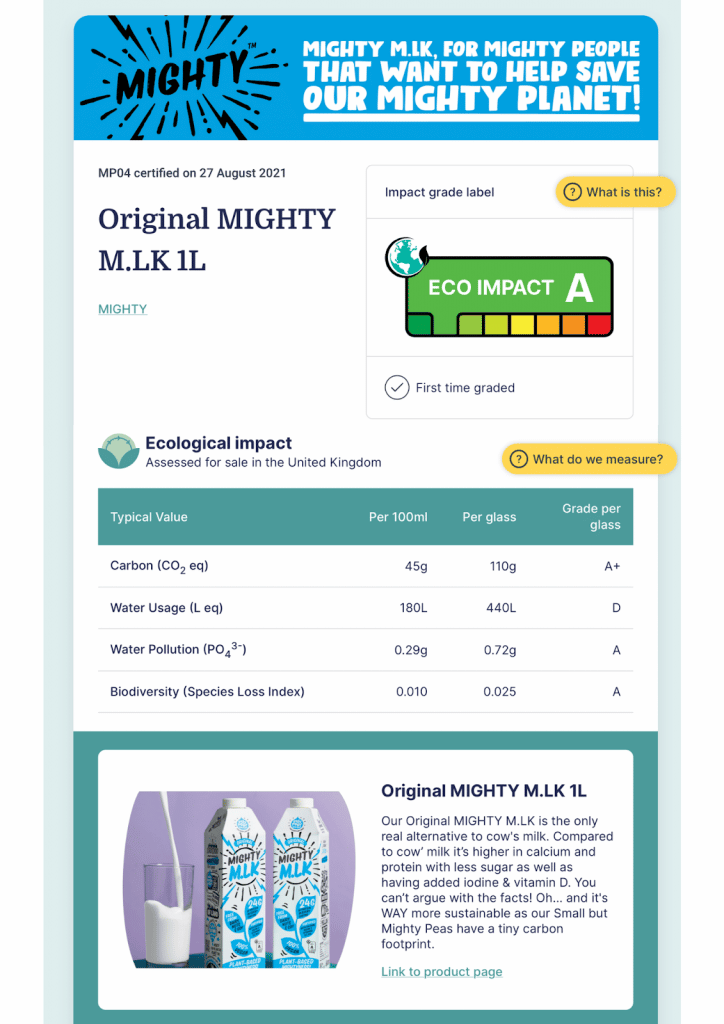
A similar eco-accreditation label was launched in France in 2021. According to an Ipsos poll conducted five years earlier, 78% of French people lacked adequate information on the environmental impact of their product purchases.27 This problem galvanized a consortium of French businesses to unite and co-create the Eco-Score – a user-friendly front-of-pack metascore.
In September 2021, Lidl began trialing Eco-Score labeling on its tea, coffee, and hot chocolate ranges in Scotland. Shelf tickets for these items also displayed the eco-label scores during the trial. Lidl collected customer feedback and analyzed purchasing behavior across the stores in order to determine the impact of the new environmental scores.

Is there a downside to meta-score labeling? The main issue is relatability. “Reduction in environmental impact is more of an abstract concept for consumers. What they link it to is ‘is this a sustainable product or not’?” says Cliona Howie, Executive Director of Foundation Earth, an independent NGO that’s bringing a harmonized eco-impact label to the food industry, working with Mondra to develop their certification methods.
How about limitations? “Our label can’t tell you if a product is vegan or gluten free – at the moment, you need a dietary label for that,” continued Cliona. “But there is much to be said about consolidation and convergence. The health crisis is the climate crisis.”
We would love to see a harmonized health-impact and environmental-impact score for consumers, and it’s something that ProVeg will be keeping a close eye on. In the meantime, for brands and own-labels looking to certify their plant-based products, the V-Label team has you covered. Globally, more than 40,000 products from more than 3,500 license holders now carry the V-Label, which is registered in 27 countries, and licensed in several of them by ProVeg. If you’re looking to certify your plant-based product, you can find out more on the V-Label website.
Carbon-emission labeling
In lieu of an industry standard, some brands are pressing ahead with individualized eco-labels. “Sustainability labeling is definitely coming through from suppliers, who are responding to consumers,” notes John Gill, Head of Marketing and Trading at Booths, a food retailer in Northern England.29
But why are these brands choosing to focus purely on carbon footprint? As Gill said, they’re responding to consumer demand.30
- 75% of consumers care about CO2 emissions.
- For 48% of consumers, carbon emissions are perceived as the most important indicator of a product’s sustainability.
- 58% would pay more for food and beverage products that are dedicated to reducing CO2 emissions.
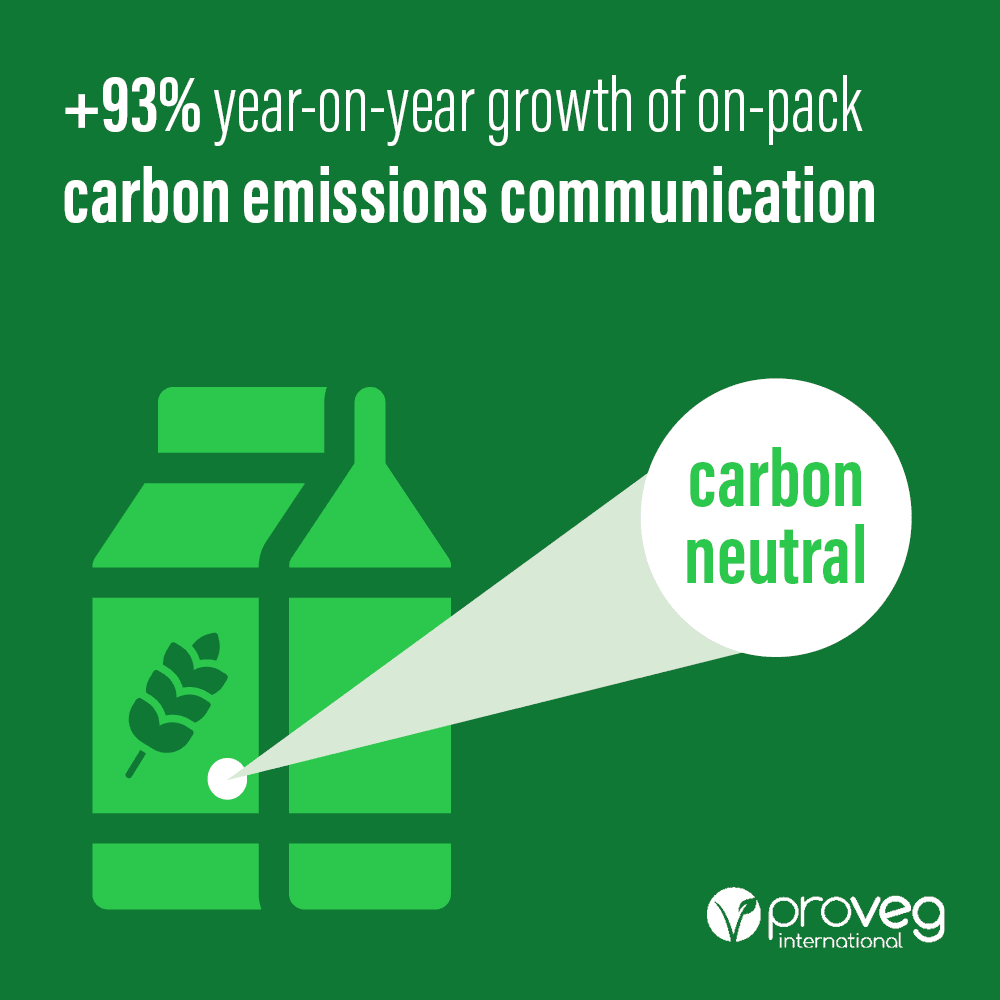
Oatly is a good example. Along with several other brands, Oatly publishes its carbon footprint on its packaging. To ensure that these figures are credible, they use an external accreditor. “Consumers want to know – and value that the source is independent and credible,” explains Cliona Howie, Executive Director at Foundation Earth.
In Oatly’s case, they certify using CarbonCloud, an organization that is “pushing for climate transparency with some of the boldest brands in modern food”.32 Right now, most of Carbon Cloud’s customers are plant-based brands. The maths would figure.
We wanted to impact consumers to drive the change… That’s why we decided to calculate the climate footprint of our products with CarbonCloud: to focus on the number that drives this change.”34
But do raw carbon-emission figures have meaning to consumers? Or does it risk adding to the confusion? Emissions data is most useful when it’s contextualized. For instance, showing emissions savings as percentages rather than raw figures allows consumers to more easily see the relationships between different options. Most consumers don’t, for example, have a point of reference for 0:38 grams of CO2 emissions. Is that good? Is it bad? Who knows! However, if you make it clear that your plant-based milk produces “80% less CO2e than dairy milk”, the sustainability choice is clear.
Oatly ran into some trouble in January 2022, when the UK Advertising Regulator upheld complaints that one of their environmental claims wasn’t clear enough for consumers.35 A TV ad stated that “Oatly generates 73% less CO2e versus milk, calculated from grower to grocer”. The regulator told the brand to remove the claim, because they weren’t comparing like-for-like – they were specifically comparing Oatly Barista Edition to full-fat milk, a fact that obvious to most consumers due to the way it was presented. In fairness to Oatly, their other environmental claims were upheld by the regulator. The lesson here is about finding that balance between conciseness and clarity for consumers.
In this next section, we’ll see how some brands have found a cunning solution to this problem.
Carbon-neutral certification
By far the simplest method of environmental-impact labeling – and possibly the most easily understandable for mainstream consumers – is to certify a product as ‘carbon neutral’. It’s a single metric based on a well-recognised term.
However, achieving carbon-neutral status isn’t straightforward. You can either self-certify your carbon footprint, which requires a lot of in-house specialist skills plus a lot of consumer trust in your brand, or you can call in professional carbon accountants to help.
Cauldron, a British tofu brand, launched their first carbon-neutral products in January 2022. In order to achieve this, they enlisted the help of ClimatePartner to calculate their farm-to-fork emissions, including “ingredients, packaging, energy required to manufacture the product, transportation, and waste treatment”.36 This helped them to reduce waste by 28% between 2020-2021. By scrutinizing their entire production chain, they identified renewable energy as a key solution for lowering their production emissions. For established brands, reliable benchmarking is a vital first step in decarbonising.
Disrupters entering established markets have an opportunity to do things differently. In 2021, Nestlé launched its new pea-based milk alternative, Wunda, using yellow split-peas sourced from European farms. They wanted the beverage to be carbon neutral from day one, and partnered with the CarbonTrust to forecast the product’s full lifecycle emissions. They used these insights to optimize their production process in order to reduce avoidable emissions, and certifiably offset unavoidable ones.37 This is sustainability by design, and it’s something all new products should be aspiring to. (Wunda also achieved nutritional superiority to many other plant-based milks, achieving a Nutri-Score of ‘A’ – indicating that the product scores well in terms of general nutritional value – which is a big draw for health-conscious consumers).
Cauldron and Nestlé use third parties to certify their products as carbon neutral.
So, what are the downsides? Well, a single-metric indicator like carbon neutrality is unlikely to generate the same environmental wins as more holistic meta scores. But the plus side is strong – it enables retailers and brands to tackle the metric that consumers are most concerned about – carbon emissions.40
As Cliona Howie explains, “So far, we have seen that there’s less interest from consumers about whether a score is A, B, C, etc. – they’re more interested that brands have voluntarily committed to independent scoring.” In other words, the value-add for consumers comes from brands seeking external validation. This, combined with an easy-to-understand sustainability metric such as carbon neutrality can be a powerful motivator for consumers.
Self-certification
But brands don’t have to rely on external parties if they don’t want to. Upfield is self-certifying their products’ GHG emissions and publishing their methodology online for the sake of transparency.
Upfield, owner of brands such as Violife and Flora, is the world’s largest producer of plant-based spreads. They recently began to roll out emission labeling across their products, hitting their first 100 million units in 2021, with ambitions to soon hit half a billion. Upfield see emissions labeling as bringing three key benefits:
- Empowering eco-minded shoppers to make informed decisions.
- Raising awareness of food emissions for other shoppers.
- Differentiate themselves from damaging emitters such as as dairy butter.
“Once you give consumers information about sustainability, they’ll make a choice based on it,” explains a sustainability representative from Upfield, echoing sentiments that we heard earlier. As the Upfield website puts it, “When people choose our plant-based products over a dairy product, carbon emissions are avoided. We call that ‘The Upside’”.41 It’s clear that the brand is positioning itself to consumers as a market leader in sustainable foods.
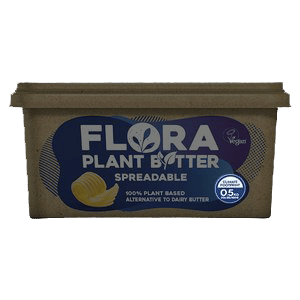
Conclusion
A label is as powerful as we make it. It’s not just enough to slap it on the pack – you have to be triggering all the levers around it. Educational awareness, financial implications, policy, the science behind it, citizen engagement, and digital consumer-friendly solutions. There are multiple triggers and they’re all of equal value for a label to be impactful.
The best thing you can do is make your label easy for consumers to understand – choose a single metric that is intuitively colour-coded. And to make it credible, use a trusted third party to certify your environmental-impact or emissions claims.
If your organization is looking to satisfy the growing consumer demand for sustainable food, now is the time to expand your plant-based range. From advising on how to replace animal-based ingredients in classic recipes to tips on how to merchandise plant-based products to flexitarians, we’ve got you covered. Get in touch at [email protected].
Note: ProVeg conducts exclusive interviews with a wide range of industry professionals for its New Food Hub white papers. Unless an alternative citation is provided, quotations are from those interviews. Some interviewees wished to remain anonymous.
References
- United Nations Food and Agriculture Organization https://www.fao.org/3/i5640e/i5640e.pdf Accessed 2022-03-17
- Intergovernmental Panel on Climate Change, Special Report: Climate Change and Land (2019) https://www.ipcc.ch/srccl/ Accessed 2022-03-17
- Innova Trends Survey 2020 and 2021. Average of (Brazil, China, France, Germany, India, Indonesia, Mexico, Spain, the United Kingdom and the United States).
- Businesswire (2021): Recent Study Reveals More Than a Third of Global Consumers Are Willing to Pay More for Sustainability as Demand Grows for Environmentally-Friendly Alternatives. https://www.businesswire.com/news/home/20211014005090/en/Recent-Study-Reveals-More-Than-a-Third-of-Global-Consumers-Are-Willing-to-Pay-More-for-Sustainability-as-Demand-Grows-for-Environmentally-Friendly-Alternatives
- Smart Protein (2021): What consumers want: A survey on European consumer attitudes towards plant-based foods. Country specific insights. European Union’s Horizon 2020 research and innovation program (No 862957). Available at https://proveg.com/what-we-do/corporate-engagement/consumer-attitudes-plant-based-food-report/ (last accessed 17.02.2022).
- Innova Trends Survey 2020 and 2021. Average of (Brazil, China, France, Germany, India, Indonesia, Mexico, Spain, the United Kingdom and the United States).
- Innova Trends Survey 2021. Average of Brazil, China, France, Germany, India, Indonesia, Mexico, Spain, the United Kingdom and the United States.
- Image source: https://ourworldindata.org/soy
- Food Climate Research Network, University of Oxford USDA PSD Database, cited from Ritchie, H and Rose, M (2021): Soy. Our World in Data. AVailable at https://ourworldindata.org/soy (last accessed 10.02.2022).
- Cited from A well fed world. Plant-based hunger solutions (n.y.): Feed-to-meat – conversion inefficiency ratio. Available at https://awellfedworld.org/feed-ratios/ (last accessed 10.02.2022).
- United Nations Food and Agriculture Organization: Global Livestock Environmental Assessment Model (GLEAM) https://www.fao.org/gleam/results/en/ Accessed 2022-02-14
- Dr. Tara Garnett and colleagues, Food Climate Research Network, University of Oxford, “Grazed and Confused” report (2017), cited in “Is grass-fed beef good or bad for the climate?”, University of Oxford News (2017), https://www.ox.ac.uk/news/2017-10-03-grass-fed-beef-good-or-bad-climate Accessed 2022-02-04
- https://dietchangenotclimatechange.com/data/ Accessed 2022-03-23
- McCullough ML. (2016): Diet patterns and mortality: common threads and consistent results. J Nutr.https://pubmed.ncbi.nlm.nih.gov/24717365/ Accessed 2022-02-17
- https://www.hsph.harvard.edu/nutritionsource/soy/ Accessed 2022-03-23
- WHO Regional Office for Europe (2021): Plant-based diets and their impact on health, sustainability and the environment: a review of the evidence: WHO European Office for the Prevention and Control of Noncommunicable Diseases. Copenhagen. https://apps.who.int/iris/bitstream/handle/10665/349086/WHO-EURO-2021-4007-43766-61591-eng.pdf?sequence=1&isAllowed=y Accesed 2022-02-17
- National Health Service UK (202): The vegan diet: https://www.nhs.uk/live-well/eat-well/the-vegan-diet/ Accessed 2022-02-17
- Craig WJ, Mangels AR; American Dietetic Association (2019): Position of the American Dietetic Association: vegetarian diets. J Am Diet Assoc.https://pubmed.ncbi.nlm.nih.gov/19562864/ Accessed 2022-02-17
- “Food sustainability: new eco label planned”, Which? 2021-06-28 https://www.which.co.uk/news/2021/06/food-sustainability-environmental-scores-label-planned/ Accessed 2022-02-07
- Innova Trends Survey 2021 (average of Brazil, Canada, China, France, Germany, India, Indonesia, Mexico, Spain, the UK and the US)
- Energy rating image source: https://media.4rgos.it/i/Argos/0821-m0014-m007-m050-asym-m008-m022-energy-saving-tips-label-changing?maxW=1200&qlt=75&fmt=webp , Eco Impact image source: https://s3.eu-west-1.amazonaws.com/prod.news.product.which.co.uk/news/wp-content/uploads/2021/06/Environmental_scores-768×461.jpg
- Lexington (2021): Planting the future https://www.lexcomm.co.uk/planting-the-future
- Image source: https://www.foodservicefootprint.com/organic-food-market-fights-back/
- Mondra: https://mondra.com/post/carbon-labelling-2-0-now-with-added-roi Accessed 2022-04-20
- Image source: https://www.foundation-earth.org
- Image source: Mondra, https://mondra.com/MP04
- Ipsos: https://www.ipsos.com/fr-fr/alimentation-durable-les-francais-de-plus-en-plus-attentifs-ce-quils-mangent Accessed 2022-04-07
- Image source: https://www.lidl.co.uk/about-us/lidl-changes-for-the-better/eco-score
- Speaking at a panel talk at Plant-based World Expo and Conference, London, October 2021.
- Innova Market Insights and ProVeg International, Innova Trends Survey 2021. Average of Brazil, China, France, Germany, India, Indonesia, Mexico, Spain, the United Kingdom and the United States.
- Data source: Innova Trends Survey 2021 (average of Brazil, Canada, China, France, Germany, India, Indonesia, Mexico, Spain, the UK and the US)
- https://carboncloud.com/ Accessed 2022-02-07
- Image source: Carbon Cloud: https://carboncloud.com/
- Carbon Cloud: https://carboncloud.com/ Accessed 2022-02-07
- BBC: https://www.bbc.co.uk/news/business-60128075 Accessed 2022-02-17
- “Proud our Plant Based food is Carbon Neutral”, Cauldon Foods, https://www.cauldronfoods.co.uk/carbon-neutral?gclid=CjwKCAiAo4OQBhBBEiwA5KWu_-5q_LefGzV3tdtMH69ho1WonBSzbYTCuVgxcWHIDzIbdvQq5d-FsxoC1r0QAvD_BwE#certification Accessed 2022-02-07
- “Nestlé’s new pea-based milk alternative is epic in everything”, 2021-05-05, https://www.nestle.com/media/news/wunda-pea-based-milk-alternative Accessed 2022-02-10
- Image source: Cauldron, https://www.foodnavigator.com/var/wrbm_gb_food_pharma/storage/images/media/images/cauldron-korean-bites/13141403-1-eng-GB/Cauldron-Korean-Bites.png
- Image source: Wunda, https://veganfoodandliving-1321f.kxcdn.com/wp-content/uploads/2021/05/Nestle%CC%81-pea-milk-Wunda.jpg
- Innova Market Insights and ProVeg International, Innova Trends Survey 2021. Average of Brazil, China, France, Germany, India, Indonesia, Mexico, Spain, the United Kingdom and the United States.
- Upfield: https://upfield.com/purpose/better-planet/ Accessed 2022-02-07
- Image source: https://assets.sainsburys-groceries.co.uk/gol/8081134/1/300×300.jpg

